Bit difficult to find this museum as it is down some backroads from the centre of Pompeii and the signs seem to stop just when you need them. It's worth persevering to get to it though as it has some of the finds from Pompeii and Herculaneum, before Naples Museum snapped them all up, plus some unusual body casts found at several other villas in the area.
Unfortunately I can't seem to find the map we used to get to it, so you will have to pick one up at the Pompeii Site. However I have put a local map next to the Boscoreale link in the left frame. Hopefully this will be of some help to you.
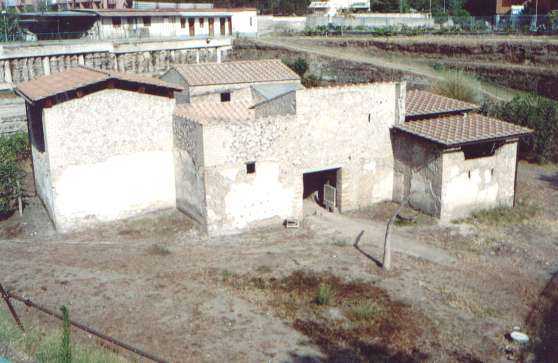 |
| Click Picture for Tree Detail. |
The Farmstead is next to the Museum but unfortunately the access ramp down to the site level was undergoing renovation when we arrived so we were unable to get close to it, the Museum however was open for business.
You can see a reasonable amount from the raised area around the site, including the fossilised remains of trees and tree stumps in the villa grounds. Click the picture above for an example of a fossilised tree also note the preserved doors in the entranceway, also once wood.
Discovered in 1977 during some construction work, the villa was excavated until 1980 when major work was stopped. It was a vineyard, one of the many that were (and still are) in the region.
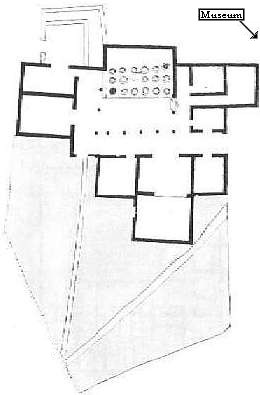
At the center of the small sized building there are 18 pots (dolii) buried into the floor.These were used for storing grapes and other produce grown on the property. Some of this produce was found still in the dolii and was in such a good state of preservation is now held in the museum (see below). The dolii could hold a total capacity of around 10,000 litres which gives you some idea how big they are.
The only elegant room was the triclinium and decorated with wall paintings. There was a small statue of the God Bacchus found in the porchway and various tableware and kitchenware all of which are on display.
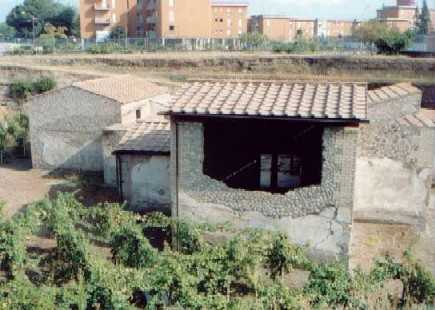 |
On the picture above-left you may just be able to make out the large dolii, through the window behind the large hole in the wall. These are the circles on the plan to the right. I'm not sure if the rooves are original or modern reconstruction for protection of the site.
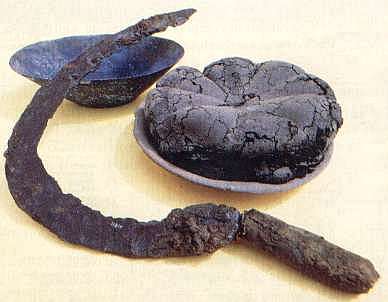 |
This is an example of some of the preserved food and implements found on the site. The round, black item is a loaf of bread.
There are lots of hooks, fishing nets, tools and amulets in the first room giving testimony to the areas rich sea heratige. Also a fragment of amphora found containing traces of the famous Roman fish sauce (garum). There are lots of model reconstructions of various villa sites in the local area too.
 |
This is a bodycast of a dog found at one of the other sites. Like the human ones from Pompeii they are made by filling in the hole left by the body as the ash and lava form rock. The skeleton is still inside as can be seen on the picture of the pig cast, found at Villa Regina, where some of the plaster has broken away.
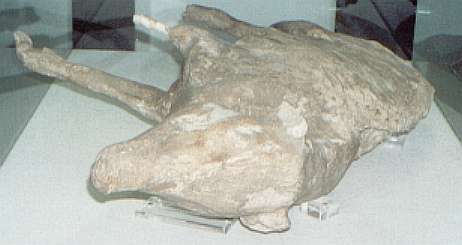 |
Below is a picture of a millstone and bowl arrangement that would have been operated by two servants or slaves walking round holding the axle handle.
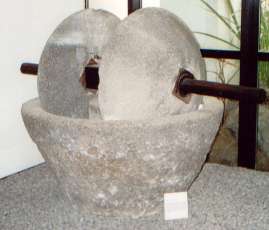 |
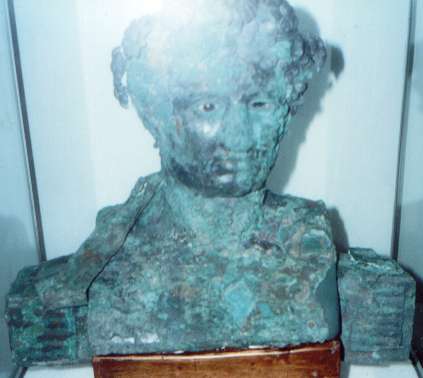 |
And finally a statue in bronze found in Pompeii. Note the glass eye still in place, looks like it's winking. Apparently most, if not all, hollow statues had glass eyes like this one. I always thought it was odd that there were just holes on all the other ones I'd seen.